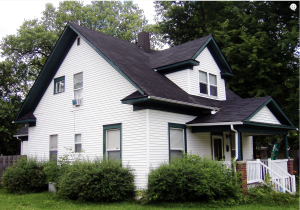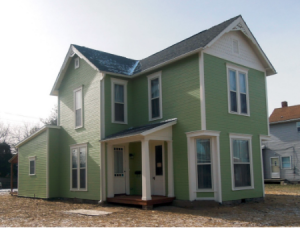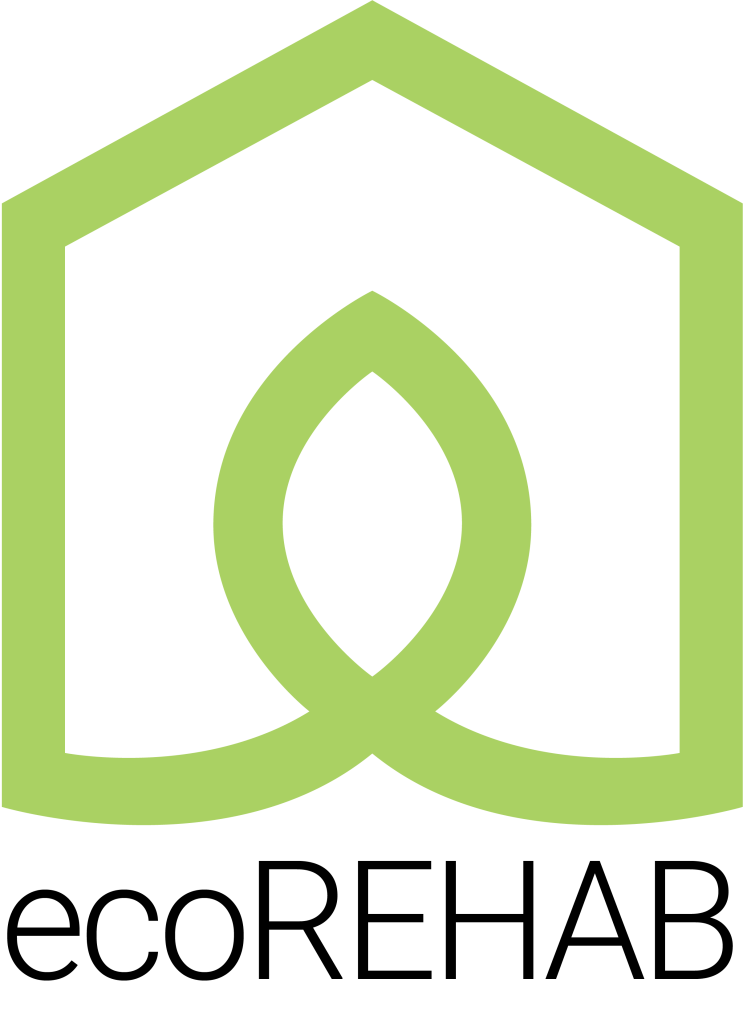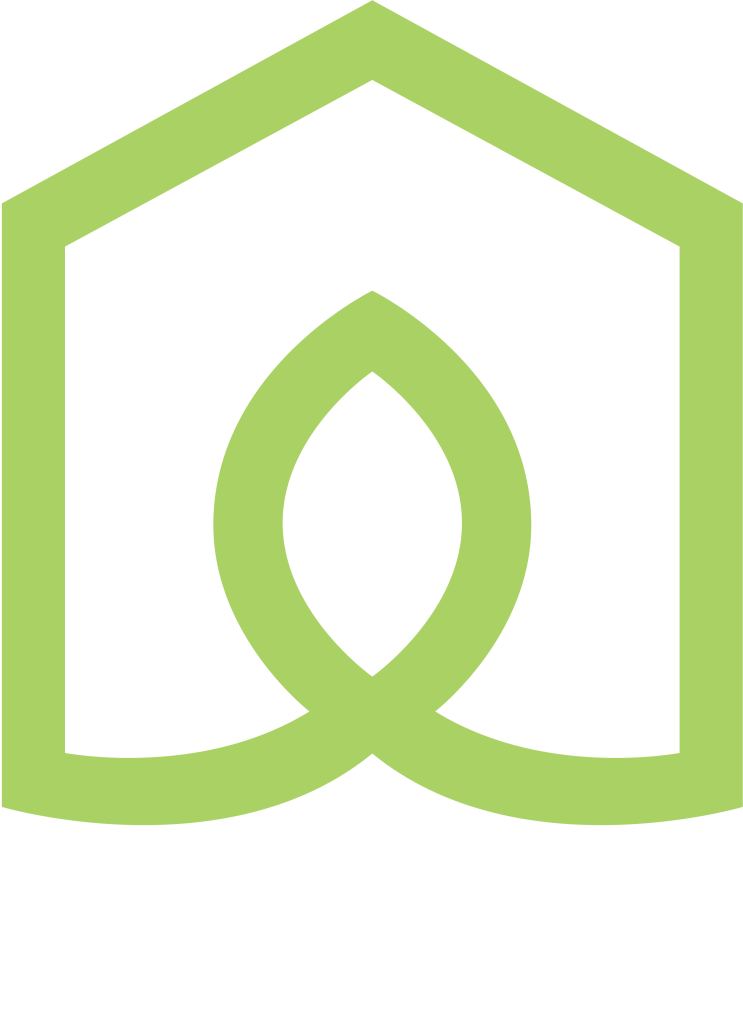ecoREHAB of Muncie is a 501(c)3 nonprofit that emerged in 2009 from a Ball State University architecture studio designed to transform abandoned houses into sustainable homes. In our brief but energetic history, ecoREHAB has worked alongside students and community partners to rehabilitate many deteriorating structures into inviting, affordable homes for our neighbors.
the history & future of ecorehab
To advance our community through the promotion and practice of sustainable design, rehabilitation, and education.
Green Homes, Strong Communities, Happy People
annual reports
Thanks to the support of our community, partnerships and donors we have grown greatly over 2019 and 2020. Download each year’s annual report to learn how we have fulfilled our mission to advance our community through sustainable design and education.
our values
We value sustainable building
We value partnership
We value our team
We value where we live and work
We value affordability
We value education
We value safety
Our History
Muncie officials move to demolish hundred of abandoned homes
It was 2009, and Muncie officials were considering a blight elimination plan to demolish hundreds of deteriorating houses in Muncie’s urban core neighborhoods. Abandoned homes often shelter crime and poverty, and clearing them seemed like the best idea.
But Ball State Architecture Professor Jonathan Spodek encouraged the city to imagine the resulting weed-ridden vacant lots, creating holes in the city’s urban fabric. His suggestion: transform the dilapidated dwellings into inviting, energy-efficient homes that would restore neighborhoods while promoting sustainability—ultimately promoting economic prosperity, environmental protection, and social equity.
A Student-Centered, Sustainable Approach
Spodek organized an ecoREHAB design/build studio through Ball State’s renowned College of Architecture and Planning. Students enrolled in the course explored ways to design and rehabilitate at-risk housing using sustainable, green practices.
In July 2009, Spodek and Bill Morgan, then Muncie’s historic preservationist, teamed with a handful of dedicated community members to secure 501(c)3 nonprofit status for ecoREHAB of Muncie, Inc. Focused on collaboration, the organization connected with the Muncie Historic Preservation and Rehabilitation, Action Inc., and the Muncie Public Library to conduct a workshop about weatherization—educational outreach the organization continues today.
Building Community, One House at a Time
 That December, Muncie’s Department of Community Development awarded ecoREHAB a grant to acquire the deed to 601 E. Washington St., an abandoned house the immersive learning class transformed into a safe, sustainable home. Momentum continued with a Ball Brothers Foundation grant to rehabilitate 522 S. Gharkey St., which served as a model house and assistance center for several years. Ball State’s graduate program in historic preservation assigned a half-time graduate assistant to help coordinate summer internships for three degree programs, reflecting ecoREHAB’s breadth and collaborative spirit.
That December, Muncie’s Department of Community Development awarded ecoREHAB a grant to acquire the deed to 601 E. Washington St., an abandoned house the immersive learning class transformed into a safe, sustainable home. Momentum continued with a Ball Brothers Foundation grant to rehabilitate 522 S. Gharkey St., which served as a model house and assistance center for several years. Ball State’s graduate program in historic preservation assigned a half-time graduate assistant to help coordinate summer internships for three degree programs, reflecting ecoREHAB’s breadth and collaborative spirit.
A Sustainable Future
 In May 2011, students completed the Washington Street rehabilitation, and in September of that year, the organization became qualified as a HOME Community Development Housing Organization through the U.S. Department of Housing and Urban Development.
In May 2011, students completed the Washington Street rehabilitation, and in September of that year, the organization became qualified as a HOME Community Development Housing Organization through the U.S. Department of Housing and Urban Development.
HUD’s Neighborhood Stabilization Program provided ecoREHAB with a grant to rehabilitate an existing home at 511 W. Main St., and design work began in 2012 on a home at 817 W. Charles St., purchased by PathStone Housing Corporation of Indiana. This collaboration inspired a lasting partnership through which ecoREHAB provids design services in exchange for home buyer counseling. That December, we claimed the deed and began design of 535 S. Gharkey St.
First Executive Director Hired
In 2014, Spodek received Ball State University’s Excellence in Immersive Learning Award for innovation and leadership through the ecoREHAB studio. The organization also hired its first executive director, Craig Graybeal, who earned a Master of Architecture from Ball State that year. Among his first tasks, Graybeal collaborated with architecture students to explore a net-zero energy home, which is capable of producing renewable energy equal or greater than the amount it consumes during a year. The Ball Brothers Foundation funded this Net Zero Initiative to demonstrate the possibility of cost-effective, sustainable design through community collaboration. We continue to advance this vital project.
Expanding Educational Collaborations
Expanding educational collaborations, ecoREHAB struck up a partnership in 2014 with the Muncie Area Career Center Building Trades Program. Every year since, ecoREHAB has provided these high school students with energy-efficient design concepts, which the future builders have used to erect three homes, including those at 609 W. Main St. and 1332 E. Jackson St.
ecoREHAB also dedicated resources to support Motivate our Minds, an academic support organization that works with children after school and in the summer through tutoring and enrichment activities. Two architecture graduate students, Andrew Brindley and Emery Hunt, used locally salvaged materials to design and build a restroom and storage shed at MOM’s community garden, which is three blocks from its main building.
A Focus on Holistic Rehabilitation
Through a Community Development Block Grant, the organization developed a partnership with PathStone Housing Corporation of Indiana and Greater Muncie Habitat for Humanity to support elderly homeowners with fixed incomes. The Holistic Rehab Project is providing solutions to help more than 30 homeowners age in place.
The initiative inspired additional collaborations with PathStone, including facilitation of the Solar Uniting Neighborhoods (SUN) Workshop at Muncie’s Maring-Hunt Library. The result: four Muncie organizations, including ecoREHAB, received funds to install photovoltaic solar panel systems to generate as much electricity as the building consumes. SUN funded the effort, which was supported with in-kind labor and materials from Reid’s Electrical Services of Yorktown. ecoREHAB continues to lead outreach efforts to promote renewable, net-zero energy initiatives throughout the region.
Tearing Down Myths about Meth Homes
During the 2015-16 year, ecoREHAB’s focus turned to address issues created by the production and consumption of methamphetamines in the county. According to the city, Muncie police seized 234 meth labs in Delaware County in 2015, leading the state by a wide margin with the second-worst county record. Because of the cost and stigma associated with remediation, many former “meth homes” remain contaminated and empty.
But Graybeal is focused on dispelling myths about former meth homes and pursued funding from the Ball Brothers Foundation to acquire, clean, and sell the organization’s first rehab of a former meth house at 1215 W 10th St. Beginning in January, Spodek guided students to conclude the rehab in January 2016.
Looking to the Future
With an active board, ecoREHAB continues to expand its outreach, education and rehabilitation efforts to aid homeowners, neighborhood groups, and developers reinvest in community. Learn about ways to get involved with our efforts to promote and practice sustainable design, building, and education.

